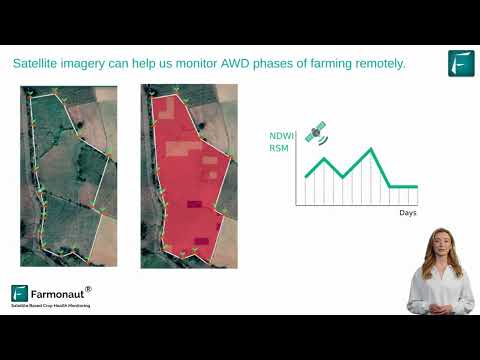
Welcome to our latest smart farming blog, where we explore cutting-edge agricultural practices that are transforming the way we grow our food. Today, we’re diving deep into an innovative technique that’s making waves in the world of rice cultivation: Alternate Wet and Dry (AWD) farming. This blog will shed light on how this method, combined with advanced satellite technology, is reshaping the landscape of sustainable agriculture.
🌾 Understanding AWD: A Game-Changer in Rice Cultivation
Alternate Wet and Dry (AWD) farming is revolutionizing rice cultivation, offering a sustainable alternative to traditional methods. But what exactly is AWD, and why is it gaining traction in the agricultural community?
AWD is a rice cultivation technique that alternates between wet and dry soil conditions. Unlike conventional methods where paddy fields are continuously flooded, AWD involves allowing the fields to dry out for specific periods before re-flooding them.
This carefully managed cycle of wetting and drying serves two primary purposes:
- Optimizes water usage
- Promotes better crop health
By implementing AWD, farmers can achieve a delicate balance between water conservation and optimal growing conditions for rice plants.
💧 The Importance of AWD in Modern Agriculture
As we delve deeper into our agriculture blog, it’s crucial to understand why AWD has become a cornerstone of sustainable farming practices. The importance of AWD cannot be overstated, especially in the face of growing environmental concerns and resource scarcity.

Traditional continuous flooding methods in rice cultivation consume vast amounts of water, a resource that’s becoming increasingly scarce. AWD addresses this issue head-on by:
- Conserving water
- Reducing methane emissions
- Improving rice plant health
By preventing issues like root rot and other water-related diseases, AWD promotes healthier crop yields. This makes it an essential technique for farmers looking to optimize their production while minimizing environmental impact.
🛰️ Monitoring AWD Phases with Cutting-Edge Satellite Technology
In the realm of smart farming blogs, the integration of technology with agricultural practices is a hot topic. When it comes to AWD, effective monitoring is key to its success. This is where advanced satellite technology comes into play, offering unprecedented accuracy and efficiency in tracking AWD phases.
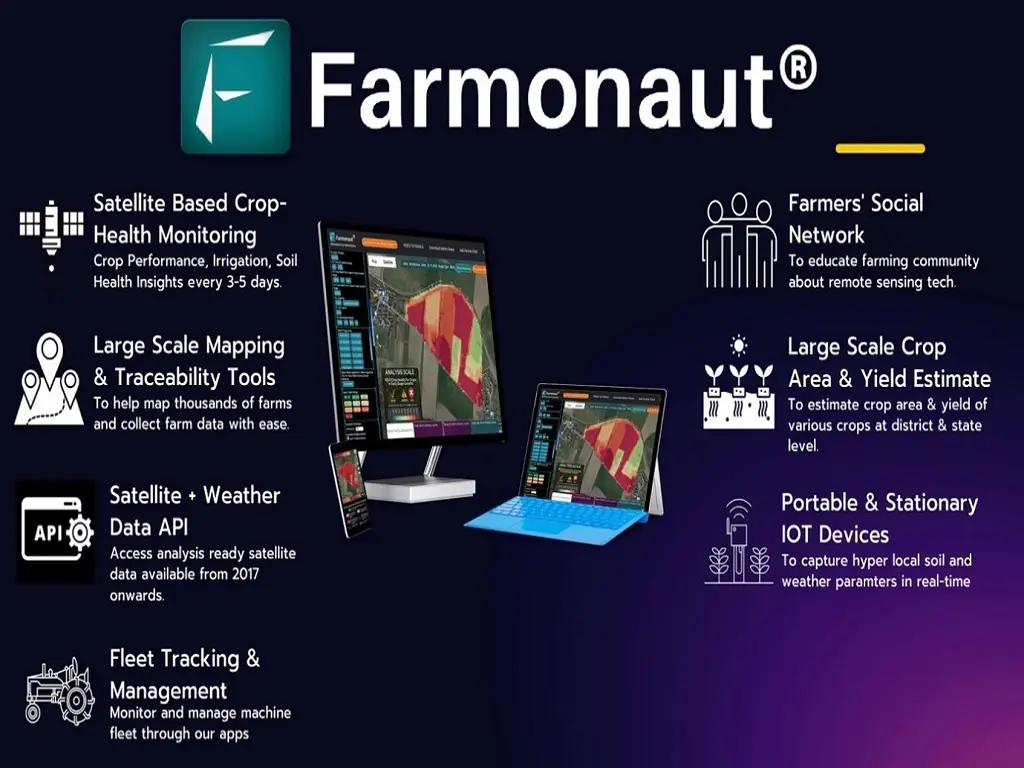
Farmonaut, a leader in agricultural technology, has developed a fully automated approach utilizing satellite imagery to detect and monitor AWD phases in rice fields. For farms registered with Farmonaut, detailed reports are provided that identify AWD phases, enabling farmers to manage irrigation more efficiently and sustainably.
This innovative approach supports:
- Precise irrigation scheduling
- Efficient water use
- Sustainable farming practices
🌱 The Benefits of AWD: A Farmer’s Perspective
As we continue our exploration of AWD in this farming blog, it’s essential to highlight the tangible benefits that farmers can expect from implementing this technique. The advantages of AWD extend beyond water conservation, touching various aspects of crop management and yield optimization.
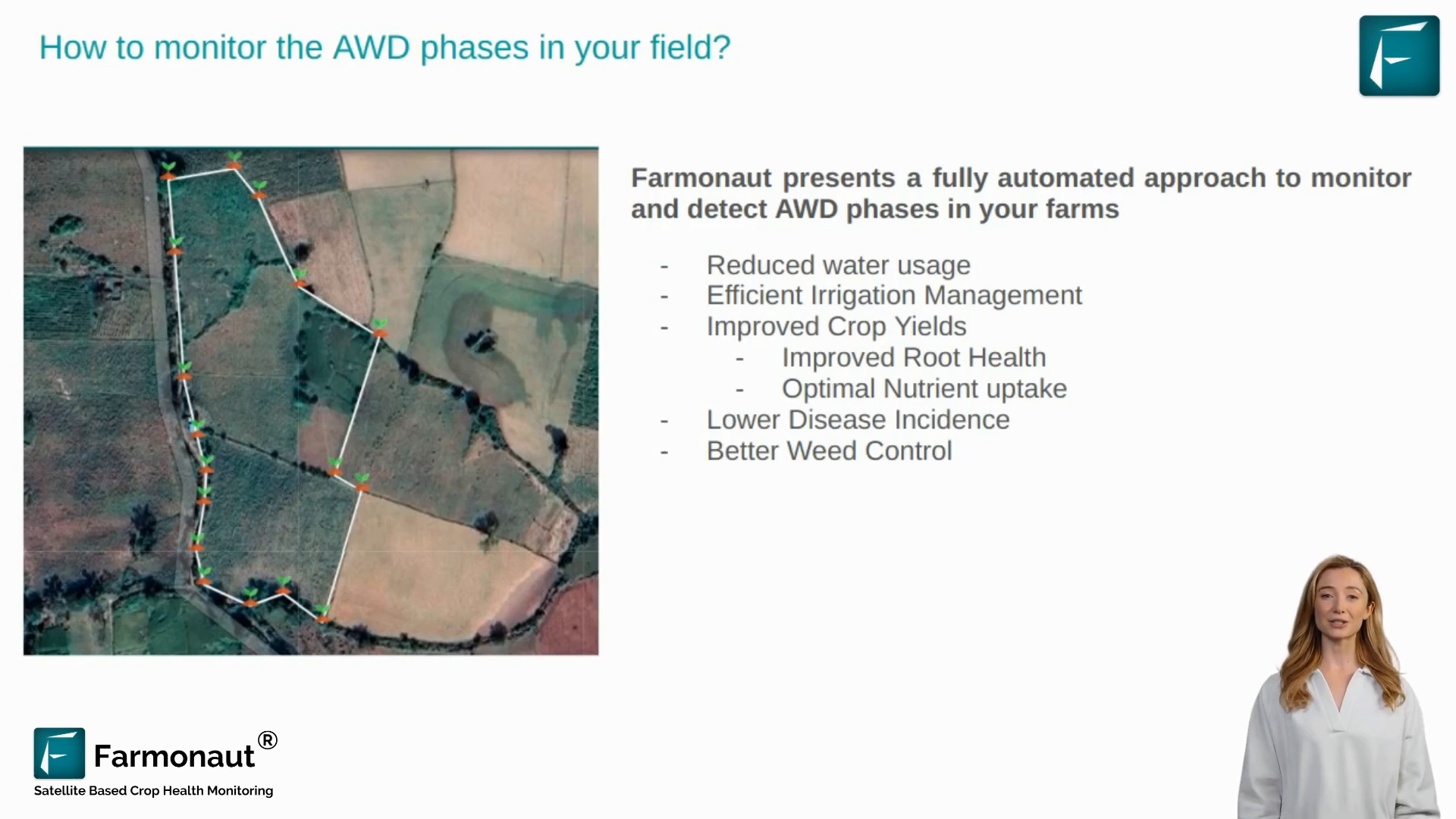
By adopting AWD, farmers can anticipate:
- Increased crop yields
- Improved root health
- Optimal nutrient uptake
- Lower disease incidence
- Better weed control
Moreover, AWD proves to be a cost-saving and drought-resilient approach to paddy management, making it an attractive option for farmers looking to enhance their productivity while adapting to changing climate conditions.
🔬 The Science Behind AWD Detection: Farmonaut’s Approach
For those interested in the technical aspects of smart farming, Farmonaut’s method of detecting AWD phases is a fascinating blend of satellite technology and data analysis. This section of our agriculture blogging delves into the scientific approach that makes accurate AWD monitoring possible.

Farmonaut’s system employs two primary data sources:
- Normalized Difference Water Index (NDWI) images
- Radar Satellite Monitoring (RSM) data
NDWI is a satellite-derived index that measures moisture content in vegetation and soil. On cloudy days when NDWI data might not be reliable, RSM data serves as an alternative. By meticulously analyzing these NDWI and RSM trends, Farmonaut can detect four main AWD phases:
- Wet
- Dry
- Prolonged dry
- Harvest prediction
This data is presented in an easy-to-understand plot with an AWD phase bar, where different colors represent different phases, allowing farmers to monitor and track changes in real-time.
📊 Data Visualization and Reporting
In the world of agriculture blogging, the importance of clear, actionable data cannot be overstated. Farmonaut excels in this area by providing comprehensive and user-friendly reports to farmers.
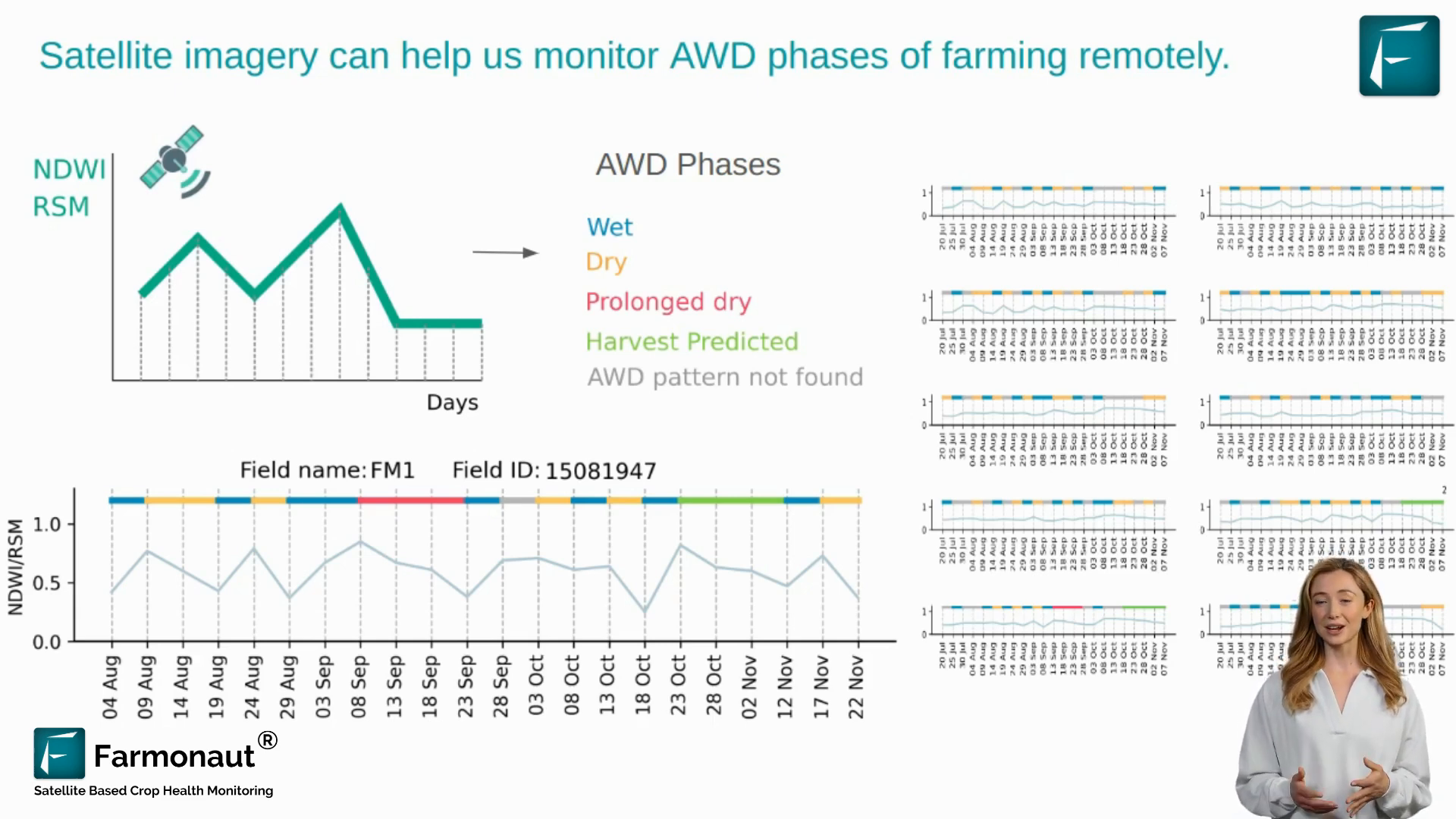
For farmers with multiple registered farms, Farmonaut generates combined multi-plot PDF reports. These reports offer:
- Comprehensive monitoring
- Easy-to-interpret visuals
- Real-time AWD phase tracking
This level of detailed reporting ensures that farmers have all the information they need to make informed decisions about their AWD implementation and overall farm management.
🎯 Accuracy and Reliability: The Farmonaut Advantage
When it comes to smart farming blogs, accuracy is a topic that always garners attention. In the case of Farmonaut’s AWD monitoring system, the level of accuracy achieved is truly remarkable.
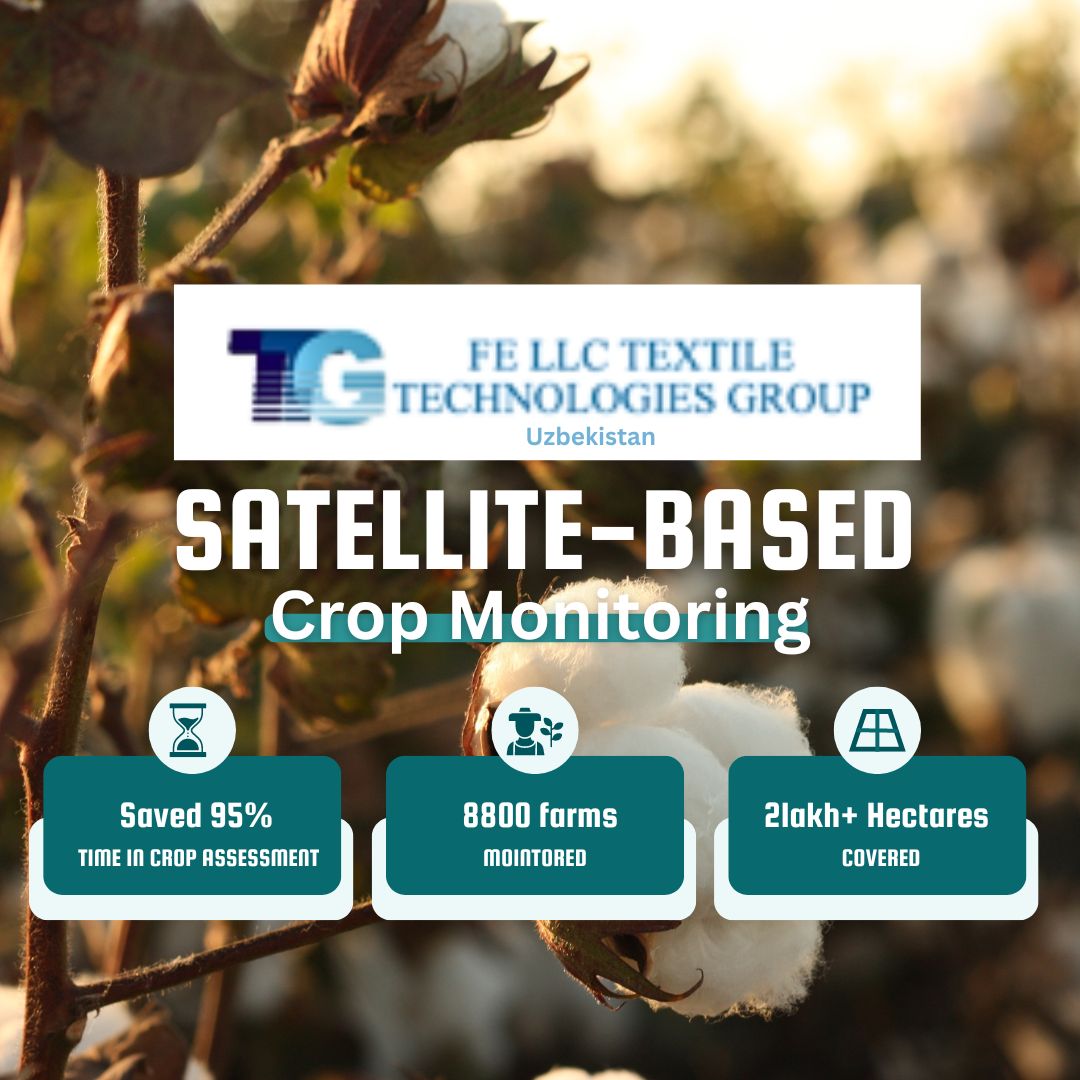
Users of Farmonaut’s system report exceptionally high accuracy rates. This is particularly significant considering that farmers may not always have precise ground reports for when AWD phases were implemented. With Farmonaut, farmers gain access to a reliable, automated tool that ensures their fields are managed efficiently.
The benefits of this high accuracy include:
- Improved decision-making
- Optimized resource allocation
- Enhanced crop management
🌍 The Future of Sustainable Rice Farming
As we conclude our agriculture blog on AWD farming, it’s clear that this technique, coupled with Farmonaut’s satellite monitoring approach, represents a significant leap forward in sustainable rice cultivation.

Farmonaut’s approach to monitoring AWD phases using satellite imagery is a game-changer for sustainable rice farming. This automated method not only simplifies the implementation of AWD but also ensures precise and efficient management of fields.
By adopting this technology, farmers can:
- Save costs
- Enhance productivity
- Contribute to sustainable agriculture
As we look to the future, it’s evident that techniques like AWD, supported by advanced technology, will play a crucial role in ensuring food security while preserving our planet’s resources.
❓ Frequently Asked Questions
To wrap up our farming blog, let’s address some common questions about AWD and Farmonaut’s technology:
The primary benefit of AWD farming is water conservation while maintaining or improving crop yields.
Farmonaut uses satellite imagery to generate NDWI and RSM data, which is then analyzed to detect changes in soil moisture levels.
While AWD is widely applicable, its suitability may vary depending on specific local conditions and rice varieties.
Users report remarkably high accuracy rates, making it a reliable tool for AWD management.
Yes, AWD farming can significantly reduce methane emissions compared to continuous flooding methods.
As we conclude this smart farming blog, it’s clear that AWD farming, supported by advanced satellite technology, is paving the way for a more sustainable and efficient future in agriculture. By embracing these innovative practices, farmers can not only improve their yields and reduce costs but also contribute to global efforts in water conservation and climate change mitigation.
